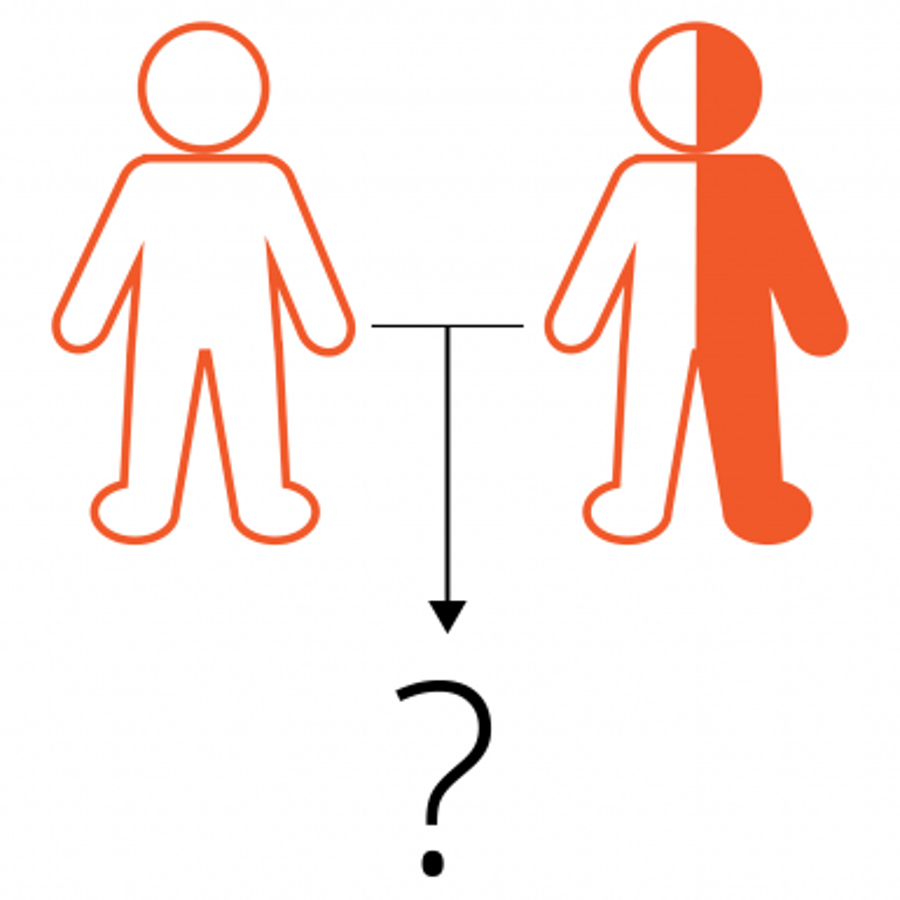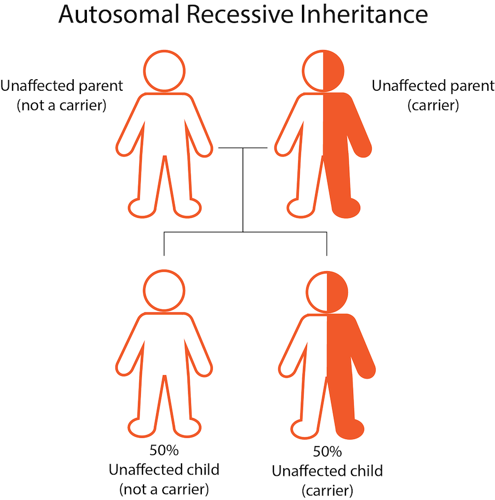
I am a carrier of Tay Sachs. What is the likelihood that my son is too?
February 12, 2009

- Related Topics:
- Autosomal recessive inheritance,
- Carrier,
- Genetic conditions
A curious adult from California asks:
"If I am a carrier of Tay Sachs, what is the likelihood that my son (age 9) is also a carrier of it? My husband does not have it and is not a carrier."
Tay-Sachs is a scary disease that is usually fatal by age 5. Luckily carriers don't have the disease. But if two carriers meet and have kids, then each child has a 1 in 4 chance of getting Tay-Sachs.
This isn't your situation since your husband isn't a carrier. Given your genes and your husband's genes, each of your children has a 50% (1 in 2) chance of being a carrier. Of course, they also have a 50% chance of not being a carrier.
To understand why this is, we need to look at how we inherit our genes.
Genes Come From Both Mom and Dad
Remember, we have two copies of most of our genes. One copy comes from our mom and the other copy comes from our dad. The two copies of a gene can be alike. But sometimes we can have two different versions of the same gene.
The gene involved in Tay-Sachs is called HEXA. And like most of the rest of our genes, we have two copies of this gene too.
HEXA comes in different versions. Some of these versions can lead to Tay-Sachs disease. But to end up with the disease, both copies of HEXA need to be Tay-Sachs versions.
This means that a person ends up with Tay-Sachs disease only if he or she gets a Tay-Sachs version of the HEXA gene from both parents. If a person gets only one Tay-Sachs version, then he or she doesn't have Tay-Sachs disease. The person is a carrier.
So a carrier is someone who has one Tay-Sachs version and one normal version of the HEXA gene. The carrier does not have the disease but can pass the Tay-Sachs version to his or her kids.
Which copy of a gene gets passed down to a child is totally random. It is like flipping a coin. Half the time you get heads and half the time tails.
So half the time a carrier passes the Tay-Sachs version of the HEXA gene. And half the time the carrier passes the normal version. This is where the 50% chance comes from.

One Working Copy Keeps Tay-Sachs From Happening
But why don't carriers end up with Tay-Sachs disease? It has to do with what genes actually do. And what makes a HEXA gene into a Tay-Sachs version.
Like other genes, the HEXA gene has the instructions for making a specific protein. In this case, that protein is hexosaminidase A, or HEXA.
Proteins are like little molecular machines that do specific jobs in our cells. And HEXA is no different. The HEXA protein's job is to get rid of something called GM2 ganglioside.
If GM2 ganglioside builds up in someone's nerves, his or her nerves stop working. And that person ends up with Tay-Sachs disease.
A Tay-Sachs version of the HEXA gene has a mistake in its instructions. The mistake means it can't make working HEXA protein. This is why someone who has two Tay-Sachs versions gets the disease. That person has no working HEXA protein and so GM2 ganglioside builds up, killing the person's nerves.
But carriers are different. They do have one copy of the HEXA gene with a mistake. But they also have one version with the instructions for making a HEXA protein that can do its job. Luckily, one copy can make enough HEXA protein to get rid of the GM2 gangliosides. Which is why carriers do not have Tay-Sachs disease.
So there you have it. A child of a carrier and a non-carrier has a 50% chance of being a carrier too. And a virtually zero chance of ending up with the disease.

Author: Dr. Dale Bodian
When this answer was published in 2009, Dale was a Research Associate in Russ Altman's lab in the Department of Genetics, studying genotype-phenotype relationships and bioinformatics. Dale wrote this answer while participating in the Stanford at The Tech program.
 Skip Navigation
Skip Navigation
